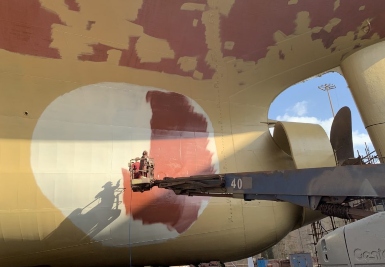 The Royal Yachting Association (RYA) is urging users of diesel propelled craft, particularly private pleasure craft, to have their say on the future of red diesel. It’s not about the colour, tax status or price, says the RYA, it’s about existing supply needs.
The Royal Yachting Association (RYA) is urging users of diesel propelled craft, particularly private pleasure craft, to have their say on the future of red diesel. It’s not about the colour, tax status or price, says the RYA, it’s about existing supply needs.
A consultation has been launched by HMRC about the proposed changes to the rules and you have until 1 October 2020 to read the proposals and make your views known.
At this year’s Spring Budget, Chancellor Rishi Sunak shared plans for the intended removal of entitlement to use red diesel from April 2022, except for the agriculture sector (including forestry, horticulture and fish farming), railways, and where diesel is used to power non-commercial heating systems, such as in homes, narrowboats and places of worship.
The Government’s looking for evidence as to whether other sectors, including recreational boating, should be allowed to maintain use of the fuel beyond April 2022. The decision by the Government to withdraw red diesel from wider use has been motivated by its intention to tackle climate change by incentivising businesses to improve the energy efficiency of their products.
The RYA says it supports a move to increase energy efficiency in the short term and to develop a pathway to zero carbon for all sectors in line with UN goals. But the RYA’s case for retaining red diesel is about existing supply needs. Recreational boaters already pay the full rate of duty and VAT when purchasing fuel for the purposes of propulsion.
The RYA will be looking at the proposals to reform the tax treatment of red diesel to see how this might affect the supply of fuel for recreational use.
The further west and north you travel in the UK the more likely it is that you will have to rely on waterside outlets that only supply red diesel for commercial purposes, such as to fishing fleets, says the RYA. In many remote places, the limited quantities of fuel used by recreational craft do not warrant the cost of installing additional equipment to supply white diesel for the recreational boating sector.
If the Government removes the entitlement to use red diesel from most sectors from April 2022 and white diesel is consequently made as widely available as red diesel is now, the supply of fuel will not be affected.

 The Royal Yachting Association (RYA) is urging users of diesel propelled craft, particularly private pleasure craft, to have their say on the future of red diesel. It’s not about the colour, tax status or price, says the RYA, it’s about existing supply needs.
The Royal Yachting Association (RYA) is urging users of diesel propelled craft, particularly private pleasure craft, to have their say on the future of red diesel. It’s not about the colour, tax status or price, says the RYA, it’s about existing supply needs.


 My blog is long overdue for an update and what better time to scribble down a few words than at the start of UK Maritime Safety Week which runs from 6 to 10 July 2020. It seems appropriate to put the IIMS weight behind an awareness campaign of this kind, not least as one of the major roles of any marine surveyor, not just in the UK, is to help to keep lives safe at sea and to help protect vessels, cargoes and maritime assets.
My blog is long overdue for an update and what better time to scribble down a few words than at the start of UK Maritime Safety Week which runs from 6 to 10 July 2020. It seems appropriate to put the IIMS weight behind an awareness campaign of this kind, not least as one of the major roles of any marine surveyor, not just in the UK, is to help to keep lives safe at sea and to help protect vessels, cargoes and maritime assets. “The patient is being left to die.” Those were the stark words used by Paul Rodgers to describe how grave he sees the situation that UK waterways holiday hire companies, boatyards, boatbuilders, training operations, marinas, boat clubs and other waterways businesses find themselves in thanks to the collapse in business following the COVID-19 related shutdown.
“The patient is being left to die.” Those were the stark words used by Paul Rodgers to describe how grave he sees the situation that UK waterways holiday hire companies, boatyards, boatbuilders, training operations, marinas, boat clubs and other waterways businesses find themselves in thanks to the collapse in business following the COVID-19 related shutdown. The International Institute of Marine Surveying’s (IIMS) submission to the Australian Senate, raising members concerns as to the direction and delivery of AMSA’s services for domestic commercial vessels, has been widely agreed with and extensively quoted in the Rural and Regional Affairs committee’s recently published report entitled Performance of the Australian Maritime Safety Authority.
The International Institute of Marine Surveying’s (IIMS) submission to the Australian Senate, raising members concerns as to the direction and delivery of AMSA’s services for domestic commercial vessels, has been widely agreed with and extensively quoted in the Rural and Regional Affairs committee’s recently published report entitled Performance of the Australian Maritime Safety Authority.


